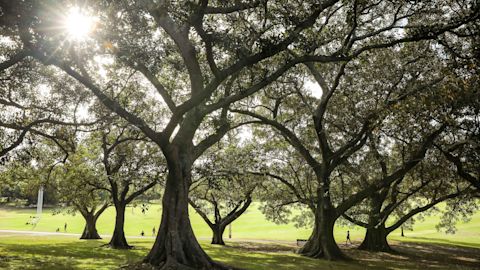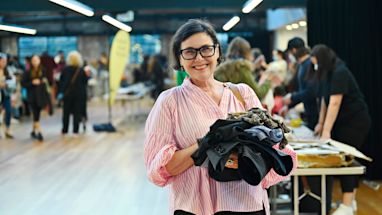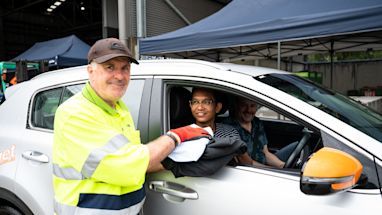Our ambitious targets are part of Greening Sydney 2030, a proposed new strategy developed to build on the work we’re already doing.
“The City of Sydney is one of only a few councils in Australia that has consistently increased canopy cover, and the only capital city to do so. Greening Sydney 2030 allows us to build on this progress and provides the next important chapter in the City of Sydney’s green story,” Lord Mayor Clover Moore said.
The draft strategy was endorsed by Council in March and is open for feedback until 24 May.


Why Greening Sydney is important
“We’re in the middle of a climate crisis and we’re already experiencing its impacts. Dangerous heatwaves are arriving earlier, are hotter and last longer. Our city must adapt to the changing climate and increase its resilience to the likely impacts,” the Lord Mayor said.
“Trees and other urban greenery are as essential as roads and broadband internet. Effective and extensive canopy cover can help reduce temperatures on the ground by up to 10 degrees.
“We will plant more trees, plants and shrubbery, and make sure they are species that are hardy and resilient to our changing climate.”


Our plan to achieve these targets
To achieve these targets, Greening Sydney 2030 has set out a series of actions:
1. Green laneways, roofs and developments
We’ll use innovation and design to create more green roofs and walls, and we’ll push ourselves harder to find creative ways to green our network of largely concrete laneways and narrow streets.
We plan to gradually amend our planning controls to increase the adoption and use of green roofs in new developments, as well as retrofitting onto existing buildings where possible.
2. Make access to greenery equitable
It’s vital we distribute greening fairly across our area so everyone benefits. Research shows there are key climate and health benefits to achieving around 30% canopy cover.
We’re analysing each street, park and property to confirm the extent of greening and canopy cover distribution. We’ll use this research to prioritise fair access to greenery and invest in areas that need it the most.
3. Introduce Green Factor Scores
A Green Factor Score is a planning tool that evaluates and quantifies the amount and quality of urban greening a project provides. All projects will need to achieve a required score, based on the type of development, location and other site considerations.
We’ll develop a Green Factor Score and embed this into updated planning controls, including the development control plan to ensure greening is planned for and provided on private land.

4. Establish a Greening Sydney Fund
No one likes seeing trees removed and it should only be done as a last resort. However, when the removal of a City of Sydney tree can’t be avoided, we’ll examine ways to ensure it’s compensated. The compensation will go into a Greening Sydney Fund, used specifically to improve greening outcomes on private land in the form of programs and grants that will encourage residents to plant new trees, install green roofs or make other contributions to increase green cover.
5. Draw on Indigenous ecological knowledge
We’ll work with local Aboriginal and Torres Strait communities to identify cultural and practical principles to that should be considered when designing new spaces, or that can help integrate people with nature.
6. Community participation and education
We’ll continue to encourage participation in greening activities like supporting education programs on urban greening and citizen science programs, community gardens and the Sydney City Farm.

Building on Greening Sydney 2012
We’re building on the work we’ve been doing to transform the urban environment for more than a decade.
Greening the city has been a priority since the we prepared our long-term strategic plan, Sustainable Sydney 2030 in 2008, as a response to climate change.
Since 2008 we have seen a 24% increase in canopy cover, a 13% increase in parks and green spaces, a 180% increase in expanded and restored native bushland since 2014, and 23 community and verge gardens established across the city.
The work we’re doing is vital for our health and the health of our environment.
“Trees remove thousands of tonnes of pollution from our air, store carbon and help mitigate extreme weather, while also relieving stress, depression and anxiety. It is critical that we value everything our broad urban forest and greenery can do for us, and invest heavily in it,” the Lord Mayor said.
Have your say on the Greening Sydney Strategy 2030.
Published 19 March 2021, updated 18 May 2021



